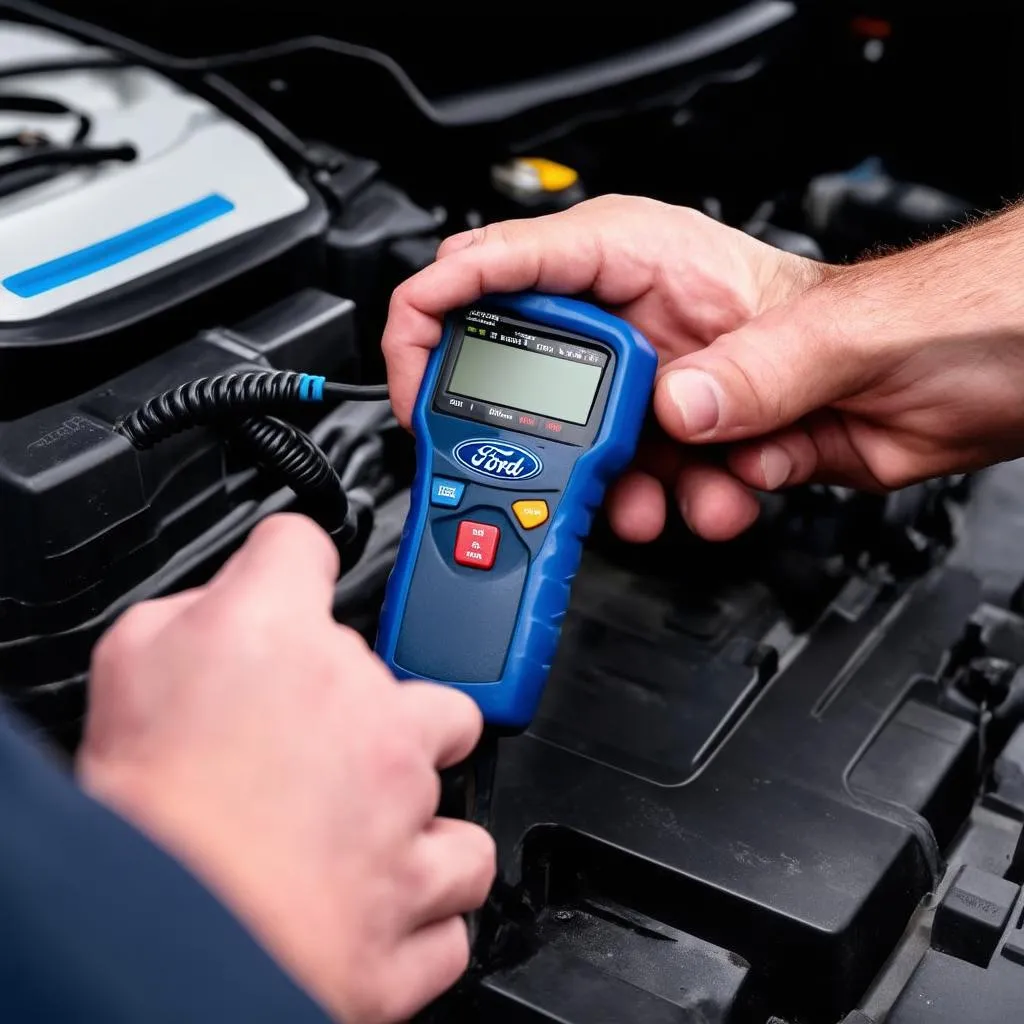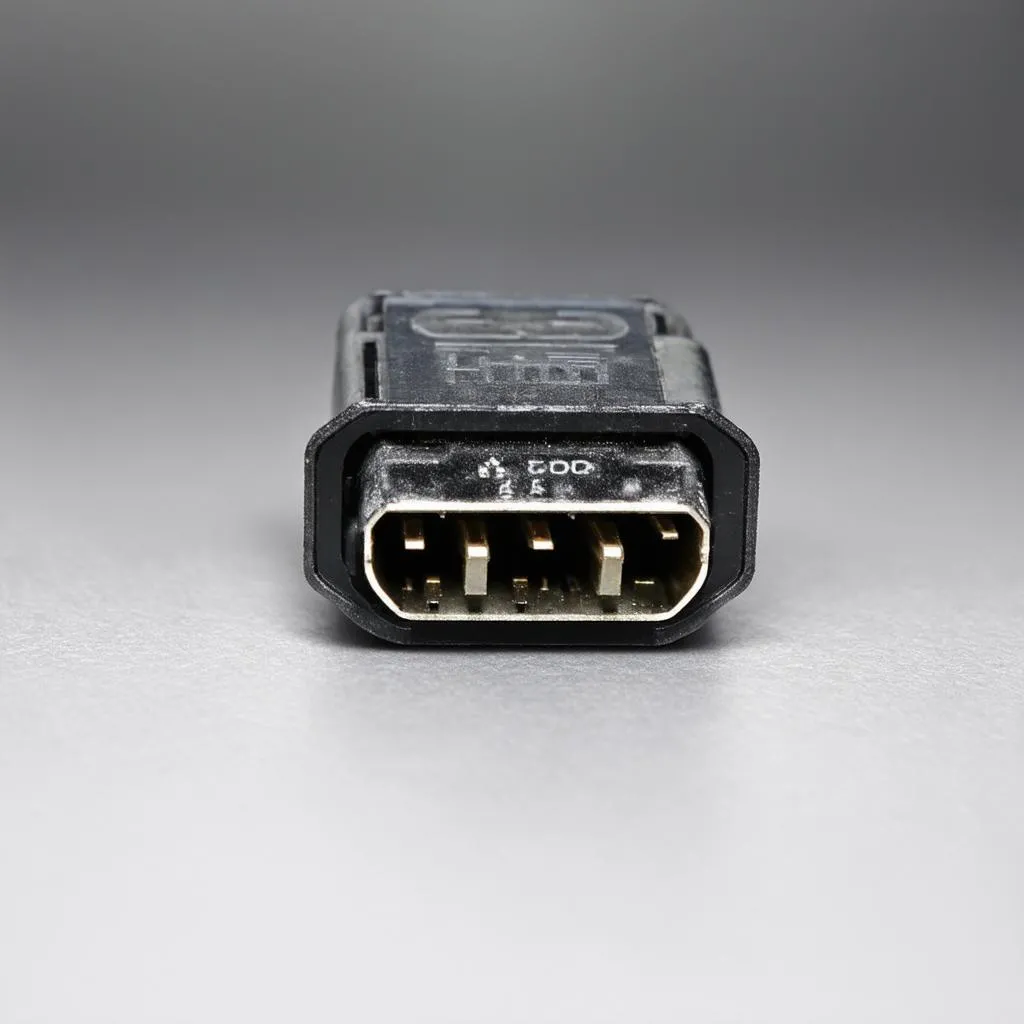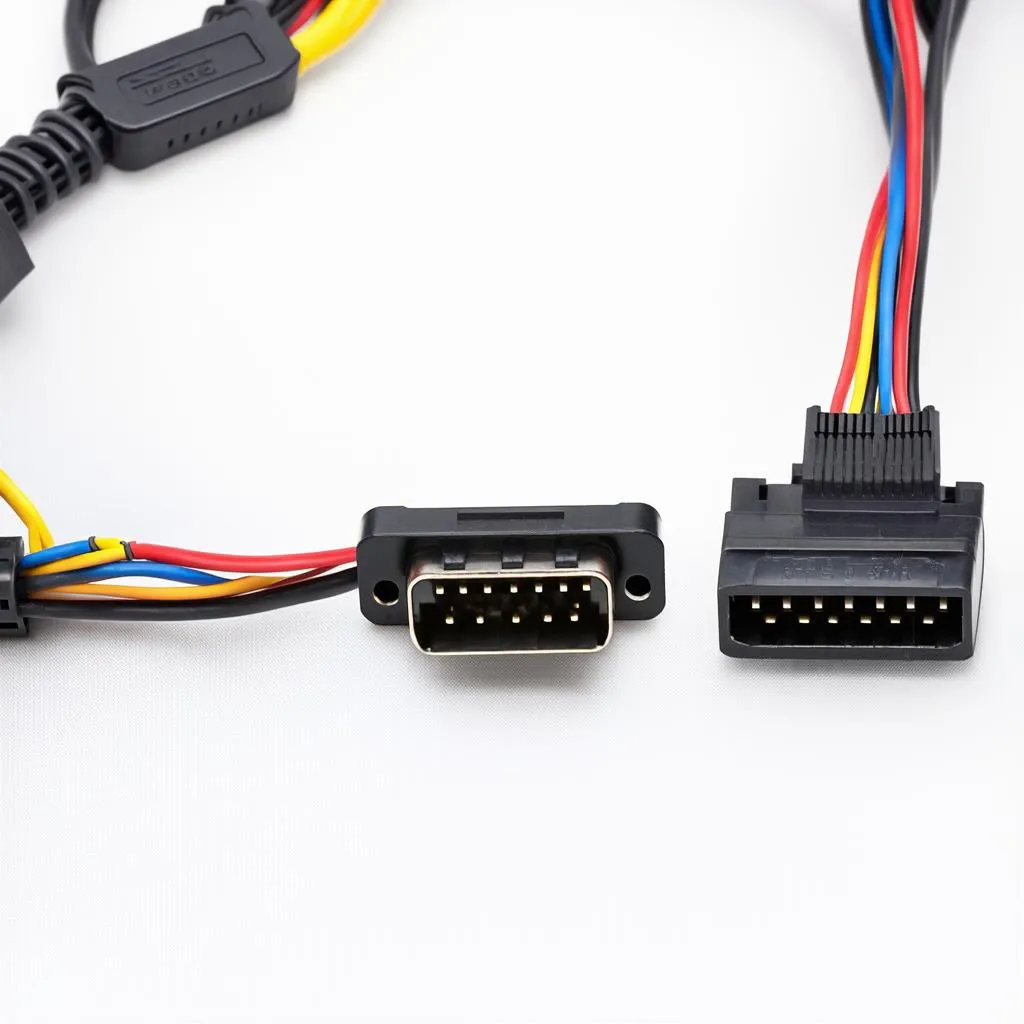Have you ever felt the frustration of trying to diagnose your Ford vehicle only to find that the OBD port isn’t cooperating? It’s a common issue that can leave you stranded and confused. In this article, we’ll delve into the world of Ford OBD ports, exploring the reasons why they might not be working and providing practical solutions to get you back on the road.
Understanding the Importance of a Ford OBD Port
The OBD (On-Board Diagnostics) port is your gateway to understanding what’s happening under the hood of your Ford vehicle. It’s a standardized port, usually located under the dashboard, that allows technicians and even DIYers to connect diagnostic tools and scan for trouble codes. Imagine your car as a complex machine, and the OBD port as the voice that whispers its secrets to you.
Why Your Ford OBD Port Might Not Be Working
1. Damaged or Corroded OBD Port
It’s like a keyhole that’s gotten clogged with dirt and debris. Over time, the OBD port can become damaged or corroded, making it difficult for the diagnostic tool to make a proper connection.
2. Blown Fuse
The OBD port relies on a fuse to provide power. If the fuse blows, the port will become inactive, leaving you unable to connect your diagnostic tool. It’s like the power switch for the voice of your car.
3. Faulty Wiring
The OBD port is connected to various components within your Ford vehicle through a network of wires. If these wires are damaged, the port won’t be able to communicate with your diagnostic tool.
4. Software Glitch
Software glitches can sometimes interfere with the OBD port’s functionality. These glitches can be caused by faulty software updates or other software issues. It’s like a language barrier between your car and your tool.
5. Environmental Factors
Extreme temperatures and moisture can also affect the OBD port’s functionality. Just like a sensitive electronic device, the OBD port needs to be protected from harsh conditions.
Troubleshooting Steps for a Non-Working Ford OBD Port
1. Check the OBD Port
Inspect the OBD port for any signs of damage, corrosion, or dirt. Use a small brush or compressed air to clean the port if necessary. It’s like giving your keyhole a good cleaning.
2. Check the Fuse
Locate the fuse for the OBD port in your car’s fuse box. Refer to your owner’s manual or a reliable online resource for the fuse location. Check if the fuse is blown and replace it with a new one if necessary. Remember, a blown fuse can be like a broken microphone in the car’s voice system.
3. Inspect the Wiring
Visually inspect the wiring leading to the OBD port. Look for any signs of damage, breaks, or loose connections. If you notice any issues, repair or replace the damaged wiring. It’s like repairing the cables that connect your car’s voice to your tool.
4. Clear Software Glitches
If you’ve recently performed a software update or experienced other software issues, try clearing the glitches by disconnecting the battery for a few minutes. This can sometimes reset the software and restore functionality to the OBD port. Remember, sometimes a simple reboot can fix a software issue.
5. Consider Environmental Factors
If your vehicle has been exposed to extreme temperatures or moisture, allow it to dry completely before attempting to connect your diagnostic tool. Protecting your car’s voice system from harsh conditions is essential.
Frequently Asked Questions
Q: Can I fix a damaged OBD port myself?
A: While you can attempt to clean or repair minor damage, it’s best to consult a professional technician for more significant issues. A professional can ensure that the repair is done correctly and safely.
Q: How can I find the fuse for the OBD port?
A: Refer to your owner’s manual or a reliable online resource such as a repair manual or forum for your specific vehicle model. It’s like having a map to the fuse box of your car’s voice system.
Q: Are there any special tools I need to test the OBD port?
A: You can use a multimeter to test the power supply and ground connections of the OBD port. A basic OBD connector tester can also help determine if the port is working properly.
Q: What happens if I can’t fix my OBD port?
A: If you’re unable to diagnose and fix the issue yourself, it’s important to consult a qualified automotive technician. They can properly assess the problem and make the necessary repairs.
Q: Can I still drive my car if the OBD port isn’t working?
A: You can still drive your car, but you won’t be able to access diagnostic information or clear trouble codes. It’s like having your car’s voice muted, but it can still function.
Additional Tips
- Use high-quality diagnostic tools. A reliable tool can make a big difference in troubleshooting OBD port issues. It’s like having a good microphone for hearing your car’s voice.
- Check for recalls. Sometimes, OBD port issues can be related to a manufacturer’s recall. Check online or contact your local Ford dealership to see if there are any recalls for your vehicle.
- Consider a professional inspection. If you’re unsure about the cause of the problem, a professional inspection can help you identify and resolve the issue quickly and effectively.
Products & Services
We offer a range of products and services designed to help you troubleshoot and repair your Ford OBD port, including:
- Diagnostic tools
- OBD port connectors
- Wiring harnesses
- Automotive fuses
Related Articles
- 2004 Ford Excursion OBD Port Not Working
- 1999 Ford Ranger OBD Port Not Working
- Ford Focus OBD Port Not Working
- 2008 Ford F150 OBD Port Not Working
- Ranger OBD Port
Conclusion
A non-functioning Ford OBD port can be a frustrating problem, but with our troubleshooting guide and tips, you can get back on track. Remember, the OBD port is an essential tool for diagnosing and maintaining your Ford vehicle. If you need help or have further questions, feel free to contact us via Whatsapp: +84767531508. We’re here to help you keep your Ford vehicle running smoothly.
 ford-obd-port-diagnostics
ford-obd-port-diagnostics
 ford-obd-port-fuse
ford-obd-port-fuse
 ford-obd-port-wiring
ford-obd-port-wiring